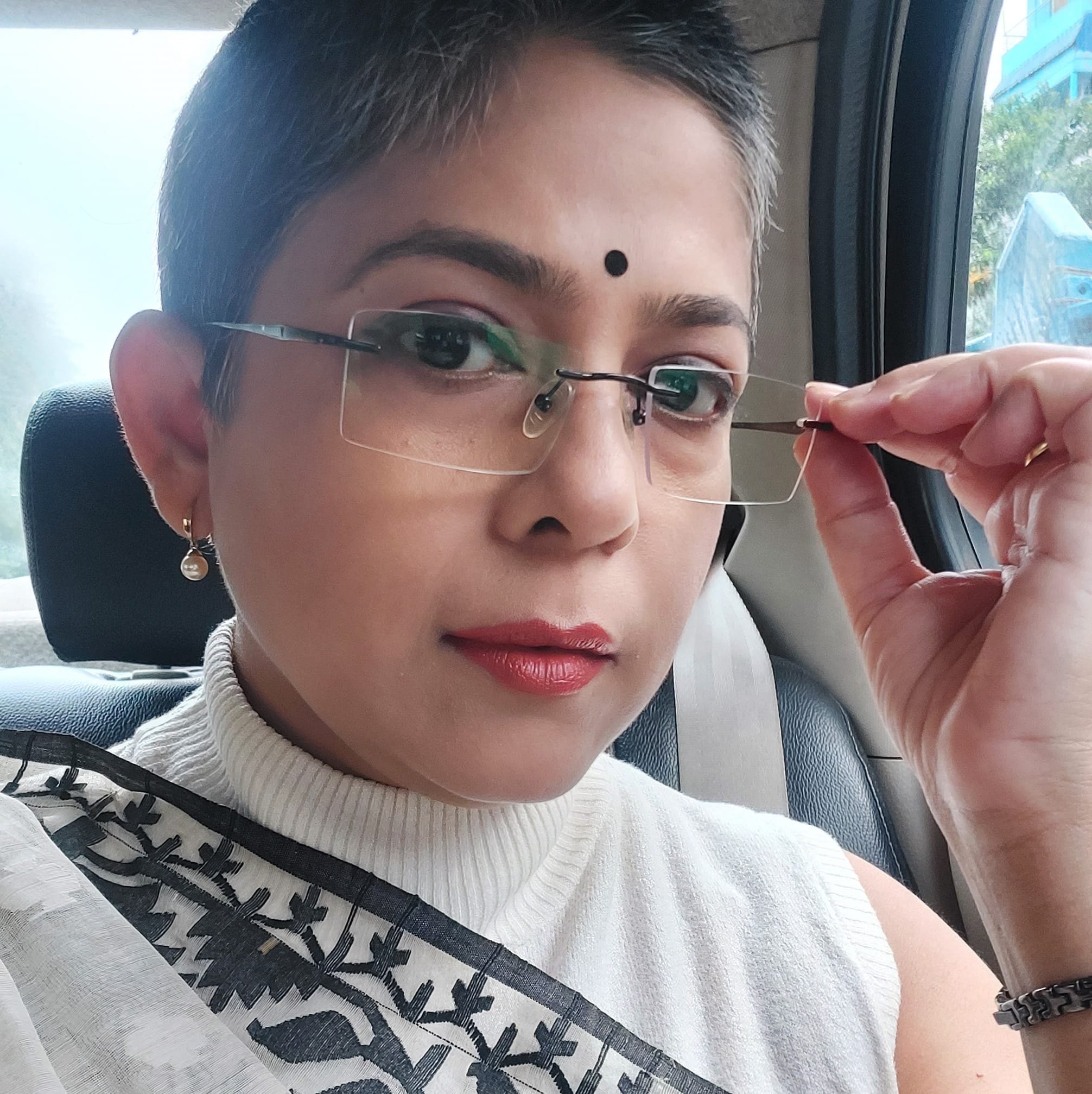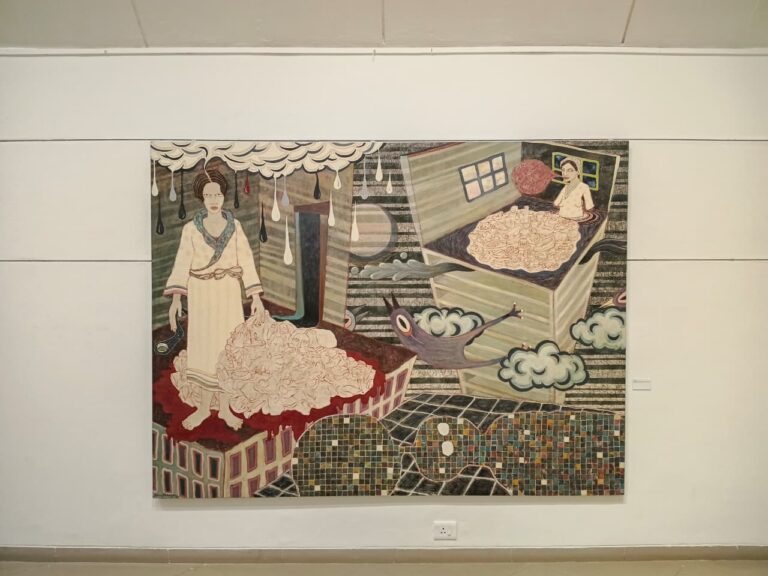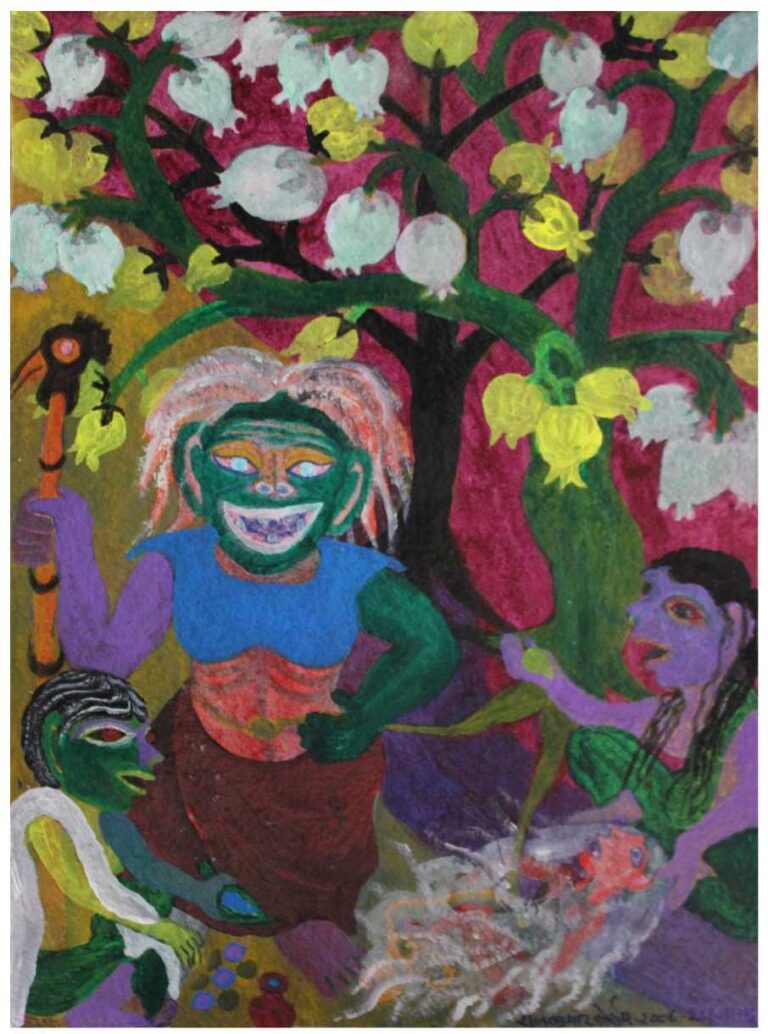The lawn at the Birla Academy of Art and Culture (BAAC) is filled to capacity – a cheerful jostle of colorful shawls and jackets, stoles and caps. The New Year is still new, with a winter colder than other years. But the art lovers of the city of Kolkata seem cozy amidst like-minded company. It is an Exhibition opening, but it looks like a ‘mela’. Up on the dais, a veteran curator is felicitating young artists; some touch her feet. A panel discussion follows.
23 years back, she was a young curator herself who was just starting out on her own; and it was in this very lawn that she had had her first show, of an artist – experimenting with wood and metal – who had never been exhibited before. The ‘never before’/’first ever’ tag would frequently get associated with her work in the decades to follow. Even then, the show she has been asked to curate as a special of the Academy’s 57th anniversary celebrations stands out in its richness and diversity. It is also a coming together, in many ways, of important aspects of her long practice.
Meet Ina Puri. And step into Stories of Light and Song: Contemporary Practices in Asia (henceforth, SoLS) — exhibited at the Sarala Birla Gallery, Terrace and Lawn of BAAC. SoLS is a group show featuring the works of Baaran Ijlal, Gidree Bawree Foundation of Arts, Ranbir Kaleka and Sudharak Olwe. It comprises a travelling sound archive; a site-specific, collaborative bamboo installation by craftsmen from West Bengal and Bangladesh; video-art; and photography.
Ten anonymously told stories make up the travelling – and evolving – sound installation, ‘Change Room’, by Baaraan Ijlal, which explores myriad aspects of desire and identity, loss and grief: a hijra’s long battle with HIV, a visually impaired person’s struggle of coping with the aftermath of sexual abuse, the indeterminate wait of being a refugee, the life-affirming gift of hard-won education. At one point in one of the audios, a female voice says: “We need a safe space where our stories can be shared without fear of judgment”. She was referring particularly to those where there is an interface between desire and violence, but that need could be extended to all life-stories, especially of marginal identities. And the ‘Change Room’ is definitely one such safe space.
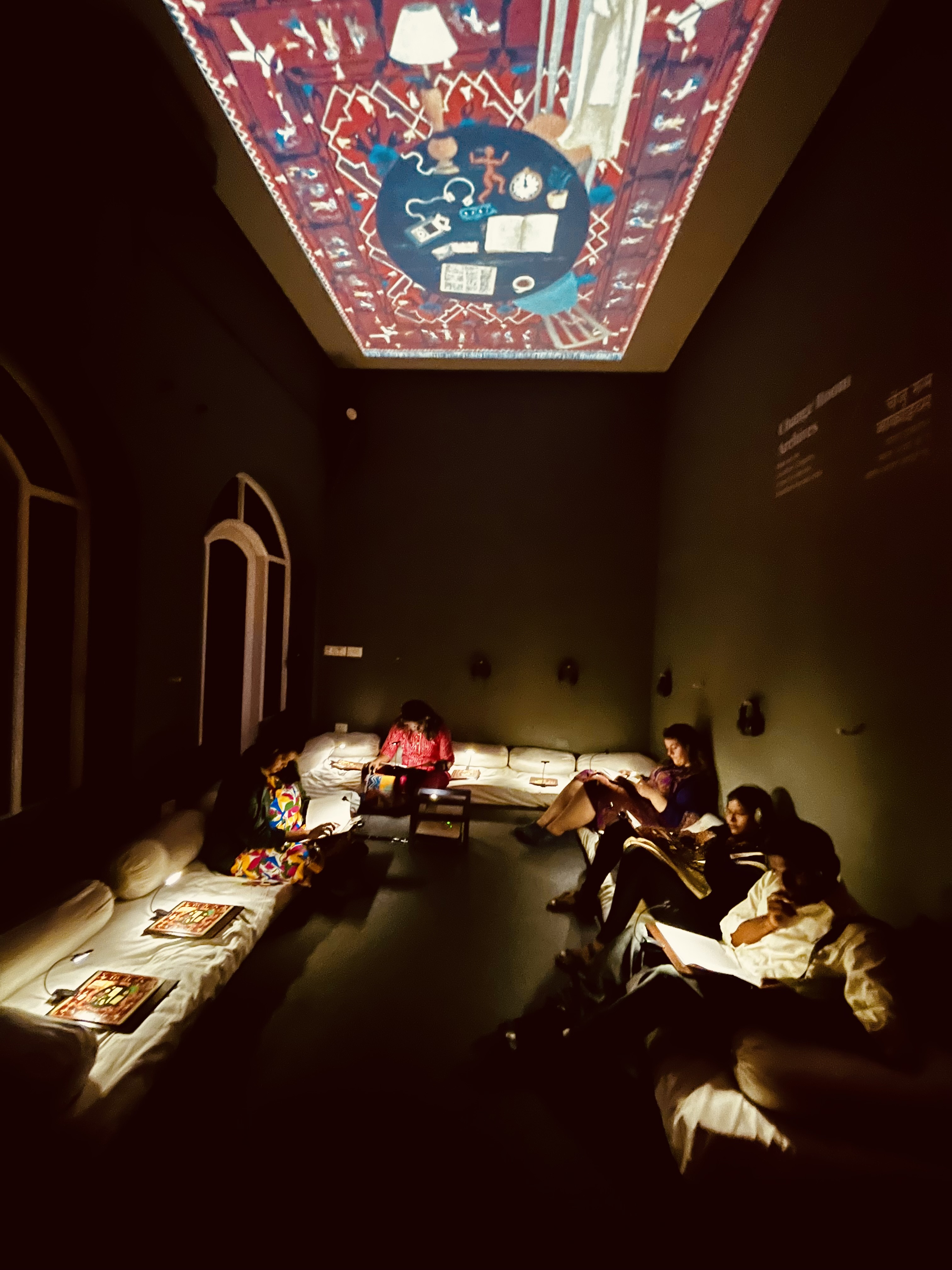
Change Room, Baaraan Ijlal
A massive site-specific bamboo installation on the grounds of BAAC is the work of the Gidree Bawree Foundation of Arts — from Balia, Thakurgaon, Bangladesh. This installation is a collaborative project that was created by a group of craftsmen coming from both sides of the Bengal border. Entitled “Waves”, it could stand (in keeping with the vision and work of Gidree Bawree over two decades) for a sea of stories of collaboration and shared history waiting to be tapped.
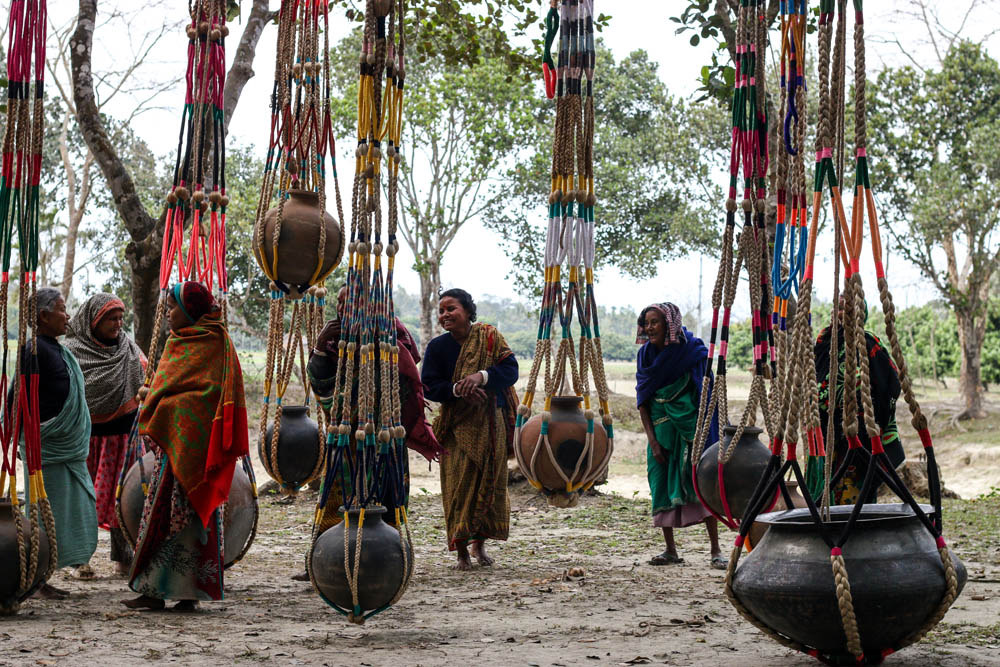
Waves, Gidree Bawree Foundation of Arts
Ranbir Kaleka’s single channel, 12+ minute video, “How far…?”, is a haunting reflection on displacement, and the existential burden of being human and never knowing the way ahead. In his ‘A few random notes’, the artist writes:
Eleven years ago, Amjad Majid, my friend from Kashmir sent me ‘No Dogs Bark’, a short story by the Mexican writer Juan Rulfo. Searching for safety, an aged man carries his adult son on his back across a nocturnal landscape. “…Ignacio! Don’t you hear something or see a light somewhere?” The story and the words reverberated in my thoughts, echoing other stories and images…
… The burden on the back is both a symbol of the suffering and disasters wrought by man, as well as that of a personal existential crisis – a constant bearing of the inner and outer weight of the human condition.
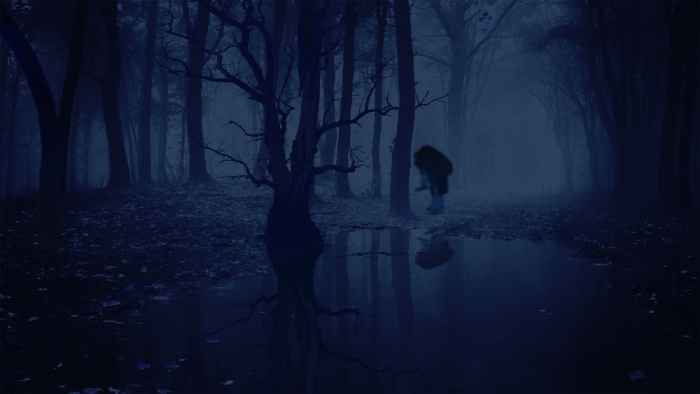
How far…?, Ranbir Kaleka
Sudharak Olwe has been documenting the life of the Lavani dancers of the Kolhati community for many years. A series of his stunning photographs of the dancers titled, “And as for you; you are closely in unison with the grief of the anklet bells”, grace the walls of the Sarla Birla Gallery on the first floor of BAAC. They take the viewer through the entire process of a Lavani performance – from the donning of costume and anklet bells (‘ghungroos’) by the dancers to the actual performance on stage (solo, duo or in group) and interactions with a live audience, to the intimacies of female bonding between them. The photographs are both in black-and-white and color; the former, however, are more striking and greater in number.
There is also a 14-minute documentary on the Lavani dancers by Olwe that delves deeper into their lives and the compulsions behind their practice. It focuses on a single troupe who performs in a single village; but the interviews of the lead dancers give us an idea of the evolution of the tradition, even in that small locality, through several generations of performers from a single family. The shift is palpable: from an overwhelming sense of being discriminated against as members of a lower caste to the dancers articulating a conscious choice in continuing with a tradition. As Vaishali Nagarkar, one of the lead dancers interviewed, says, “I feel that I have chosen my own destiny. I have chosen this life…because I love Lavani”.
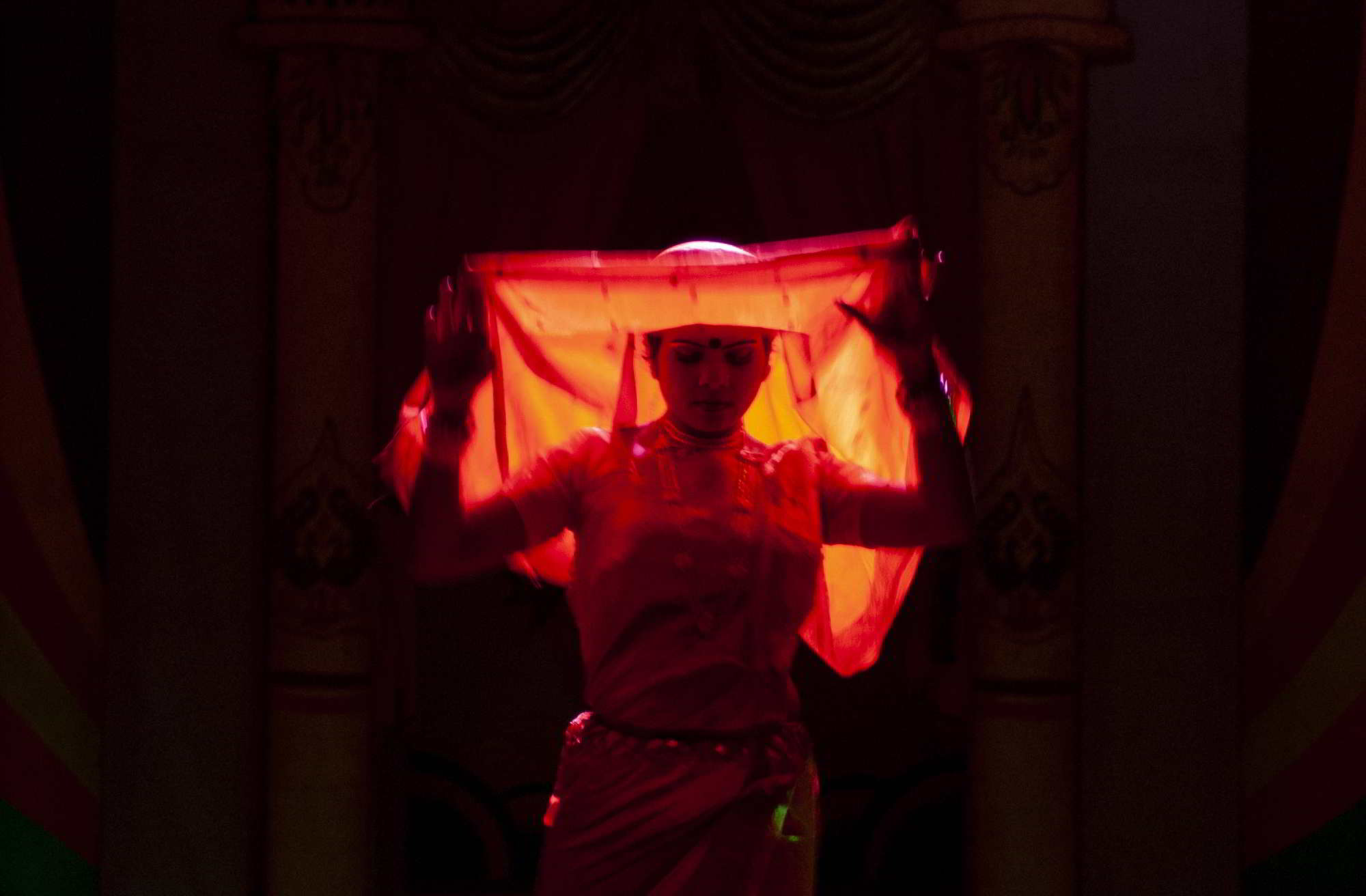
Sudharak Olwe, Lavani Documentary
SoLS had collateral events related to Olwe’s and Kaleka’s works through the month of January. The evening after the opening, a ‘Lavani’ performance by Mamata Patil and her troupe mesmerized audiences. “The beauty of the art of tamasha” that Olwe writes about in his conceptual note came alive that evening, with the dancers emoting the many moods of love and lovers – from joy and seduction to longing – alternating between zest and poise in their items. One lead dancer (Akshay) insisted the audience clap to the beat of the numbers performed and whistle at the end!
A fortnight later, Ranbir Kaleka gave an hour-long presentation in the BAAC auditorium on some key moments of his life and five-decade long practice, in the course of his conversation with the curator: from his childhood memories of time spent alone in a huge haveli; of storytellers in the family; to his student days in Chandigarh and then London; his explorations of various mediums – painting, sculpture, mixed media, and video-art; the impact of films on his artistic imagination; and his preoccupation with the concepts of “slow time” and “moving image”. It ended with an engaging Q&A session with the audience that involved questions (among others) on the phases of his artistic career and his video installation ‘How far…? in SoLS.
“When the curator was asked why the title of the Exhibition was ‘Stories of Light and Song’ when the most important element in it was dance, she said:
Song is something that can apply to so many different things. For me, the flowers in one’s garden, for example, sing a silent song. There are many different things that come into this music. I thought of this because it is the beginning of a new year. And it has been a very tough and a dark time. You open the newspapers every morning and you see all these images of war and children maimed and tortured and dying. So I thought of a title that has a sense of hope, and joy and resilience.
It is perhaps this note of hope, joy and resilience that resonated with viewers in Kolkata and made it a very successful show.”
Stories of Light and Song: Contemporary Practices in Asia, Birla Academy of Art and Culture (BAAC) curated by Ina Puri, 9 January – 9 February 2024.









